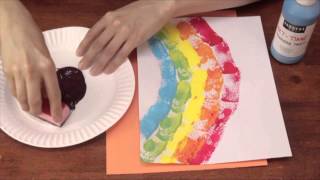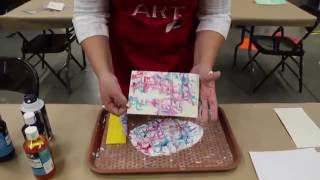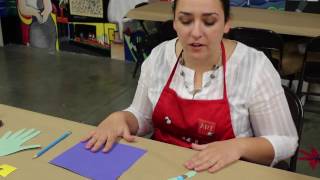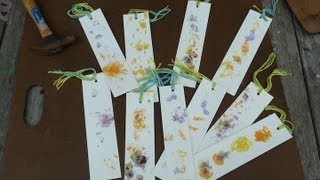Arts Integration Kindergarten Lesson: Parts of a Flower
Students use age-appropriate vocabulary to describe, analyze, interpret, and make judgments about shape, lines, and colors in flower prints by various artists. Students create a monoprint after analyzing various artists’ styles.
Read Transcript
Robynn Golden has created an arts integrated lessons to help students understand the parts of a flower. She used dramatic reading of poetry, the read the picture strategy, listening to music, and creative movement. This series of lessons designed for her kindergarten class is focused on developing the relationship of bees and to the parts of a flower. We’re going to start with the read the picture strategy in which children broaden their understanding of flowers through a study of fine art prints. Here’s the first one, and that’s by Georgia O’Keeffe. What do you notice about that flower? It’s purple it sure is purple. Is purple a warm or a cool color? Cool. It is a cool color. This is another painting by the same artist. What do you notice about this flower? It’s white. It is white, what lines do those yellow pieces have? Straight. Okay, some of them are straight, some of them have a little curve. Bees eat the nectar for this. They sure do. I tried to choose paintings that I knew that bees would be attracted to. The time spent with read the picture really pays off when the students are creating their own versions because they come to the experience of creating, full of ideas based on the broadening of their conception of flowers that took place through the read the picture strategy. Robynn goes ahead and takes this to yet another level by incorporating printmaking techniques. Using arts integrated strategies Robynn has taught in a very interactive engaging arts filled way.
Help teachers and children
worldwide by sharing how
you teach.
A global movement of people sharing knowledge and learning from each other, to better educate our children and create hope for the world.
A global movement of people sharing knowledge and learning from each other, to better educate our children and create hope for the world.






